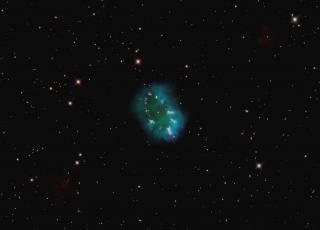Bibcode
Carpano, S.; Altieri, B.; King, A. R.; Nucita, A.; Leisy, P.
Bibliographical reference
Astronomy and Astrophysics, Volume 480, Issue 3, 2008, pp.807-810
Advertised on:
3
2008
Journal
Citations
2
Refereed citations
2
Description
Aims:We report the discovery of a peculiar object observed
serendipitously with XMM-Newton. We present its timing and spectral
properties and investigate its optical counterpart. Methods: The
light curve of the X-ray source, its spectrum, and the spectrum of the
best optical counterpart are presented and analyzed. Results: The
X-ray flux decreases by a factor of 6.5 within 1 h and stays in a low
state for at least 10 h, thereby suggesting the presence of an eclipse.
The spectrum is very soft, a power law with a slope of
Γ˜2.8, and does not change significantly before and after
the flux drop. The source is spatially coincident within few arc-seconds
with a Seyfert 2 galaxy belonging to a galaxy pair. Conclusions:
Although the background AGN seems the best counterpart, neither the
temporal nor the spectral properties of the X-ray source are compatible
with it. We investigate the possibility of having a foreground low-mass
X-ray binary in quiescence, where the companion is not detected in the
optical wavelength.
Related projects

Bipolar Nebulae
This project has three major objectives: 1) To determine the physico-chemical characteristics of bipolar planetary nebulae and symbiotic nebulae, to help understanding the origin of bipolarity and to test theoretical models, mainly models with binary central stars, aimed at explaining the observed morphology and kinematics. 2) To study the low
Antonio
Mampaso Recio